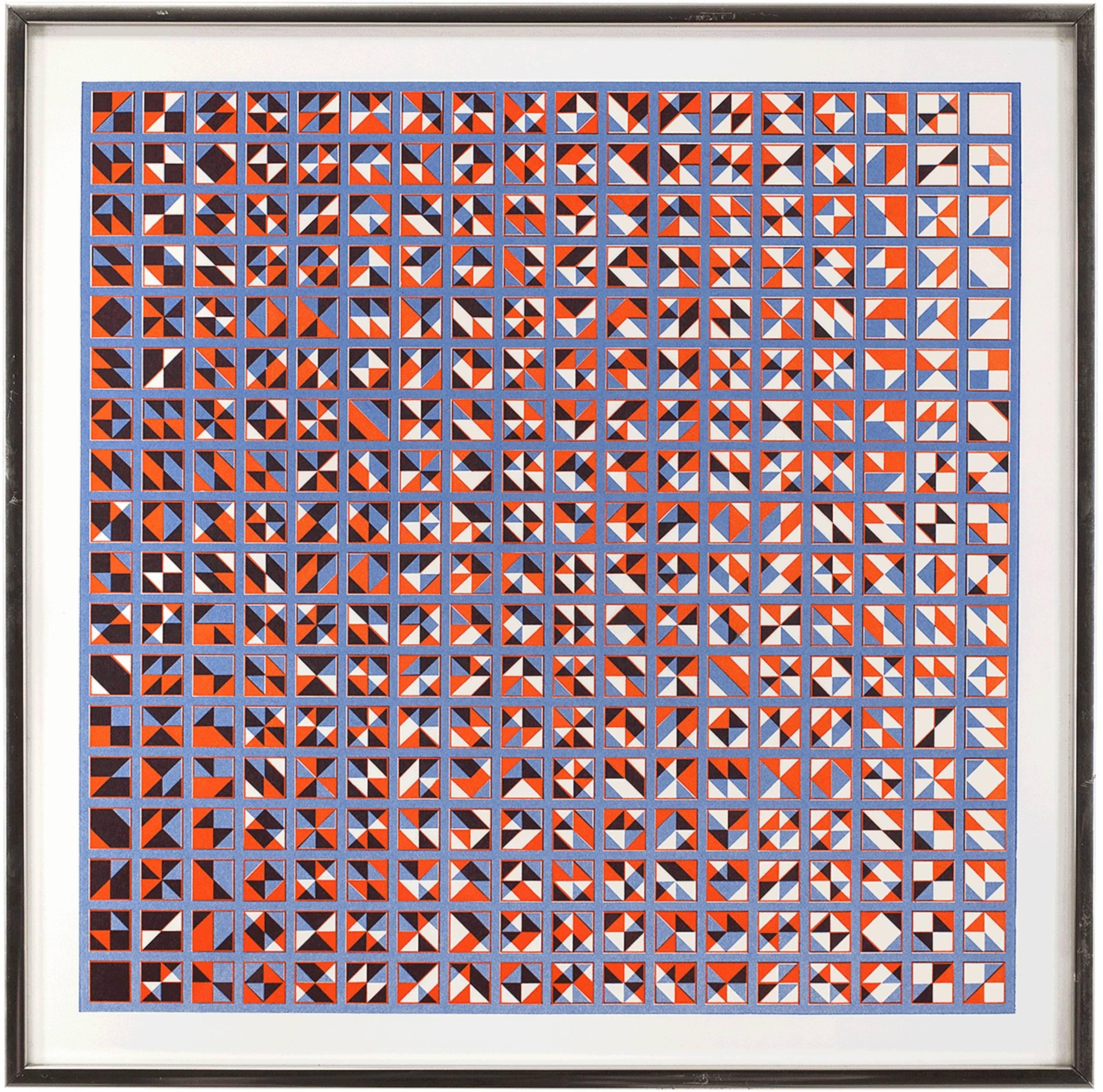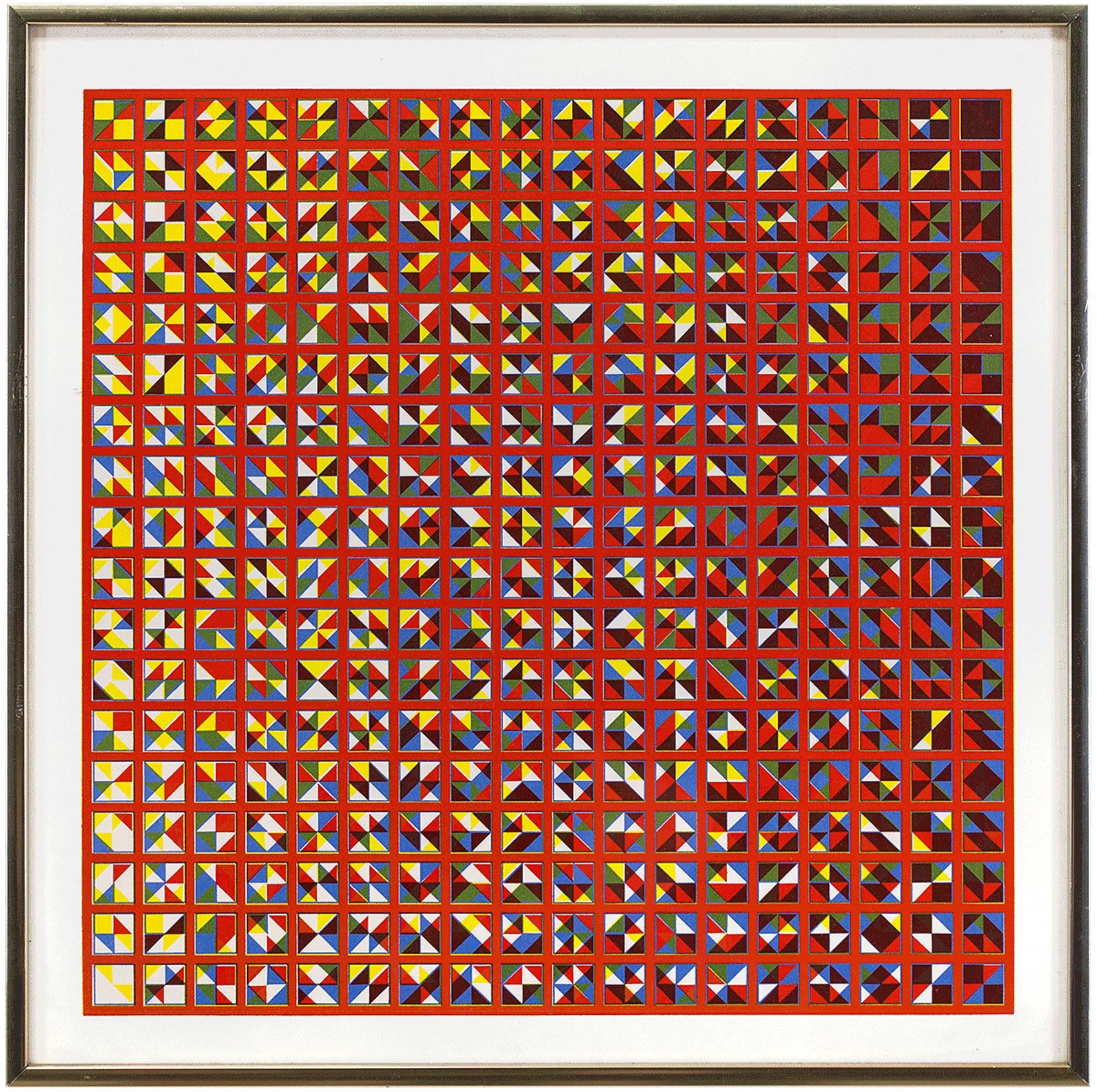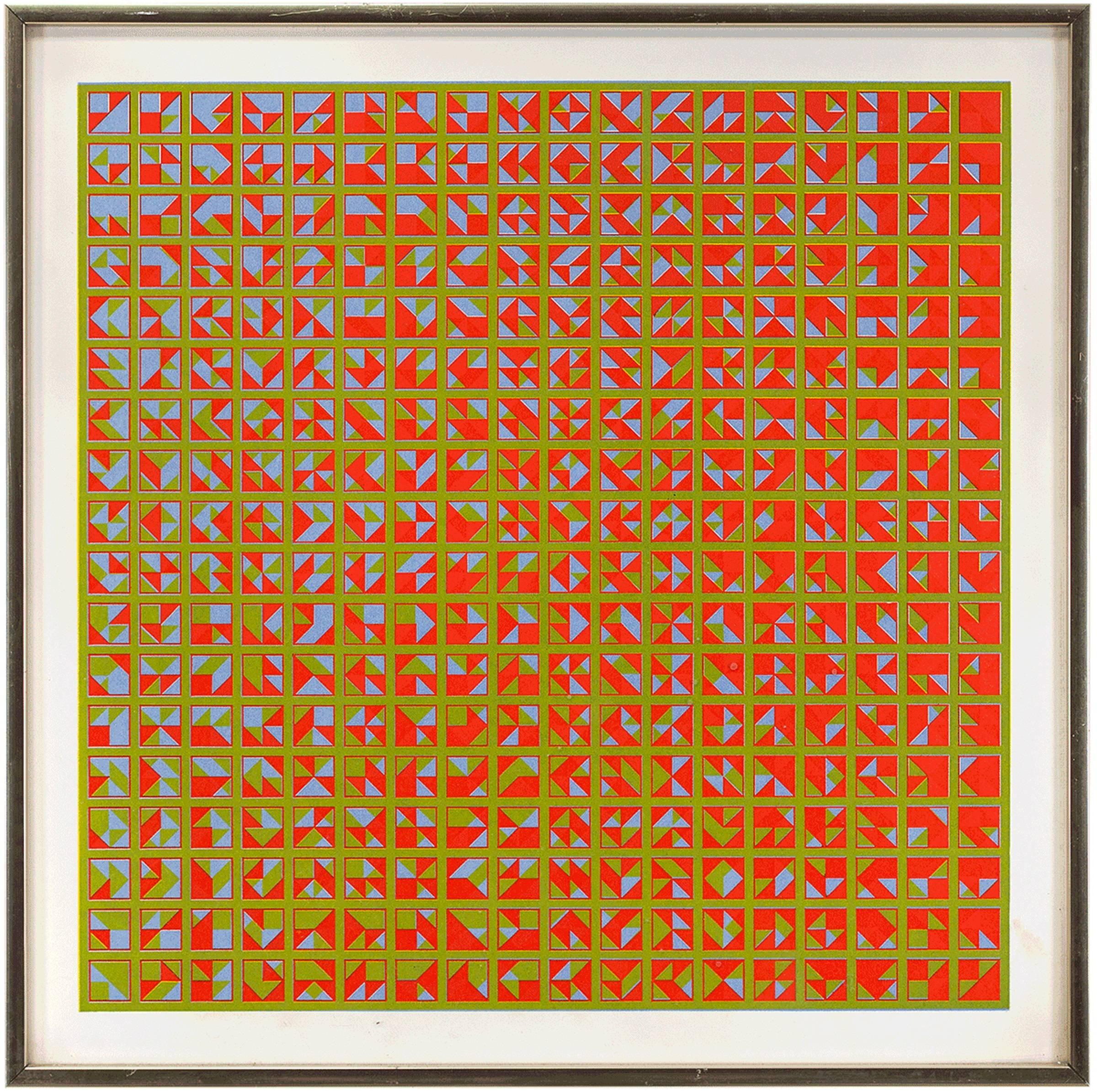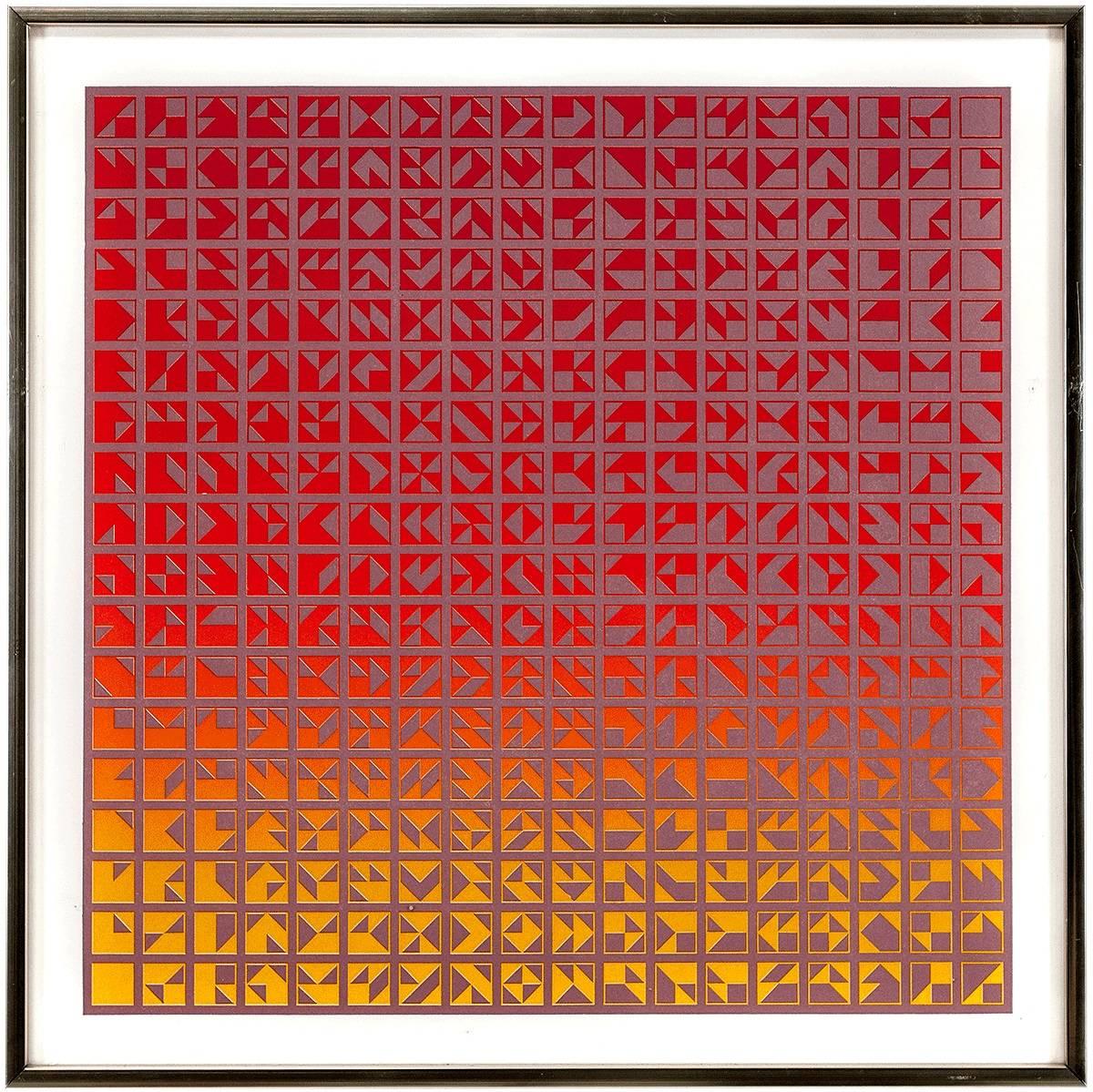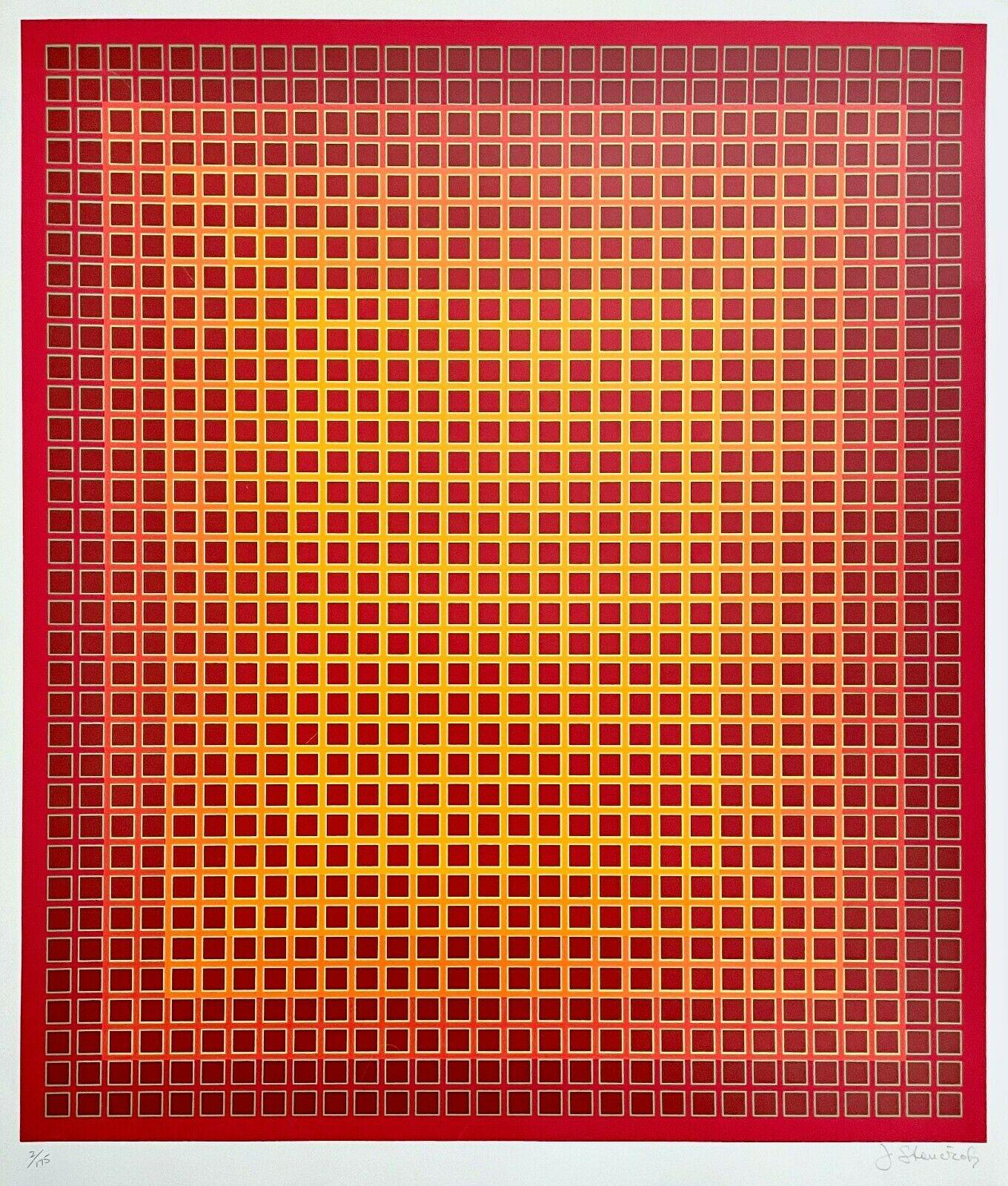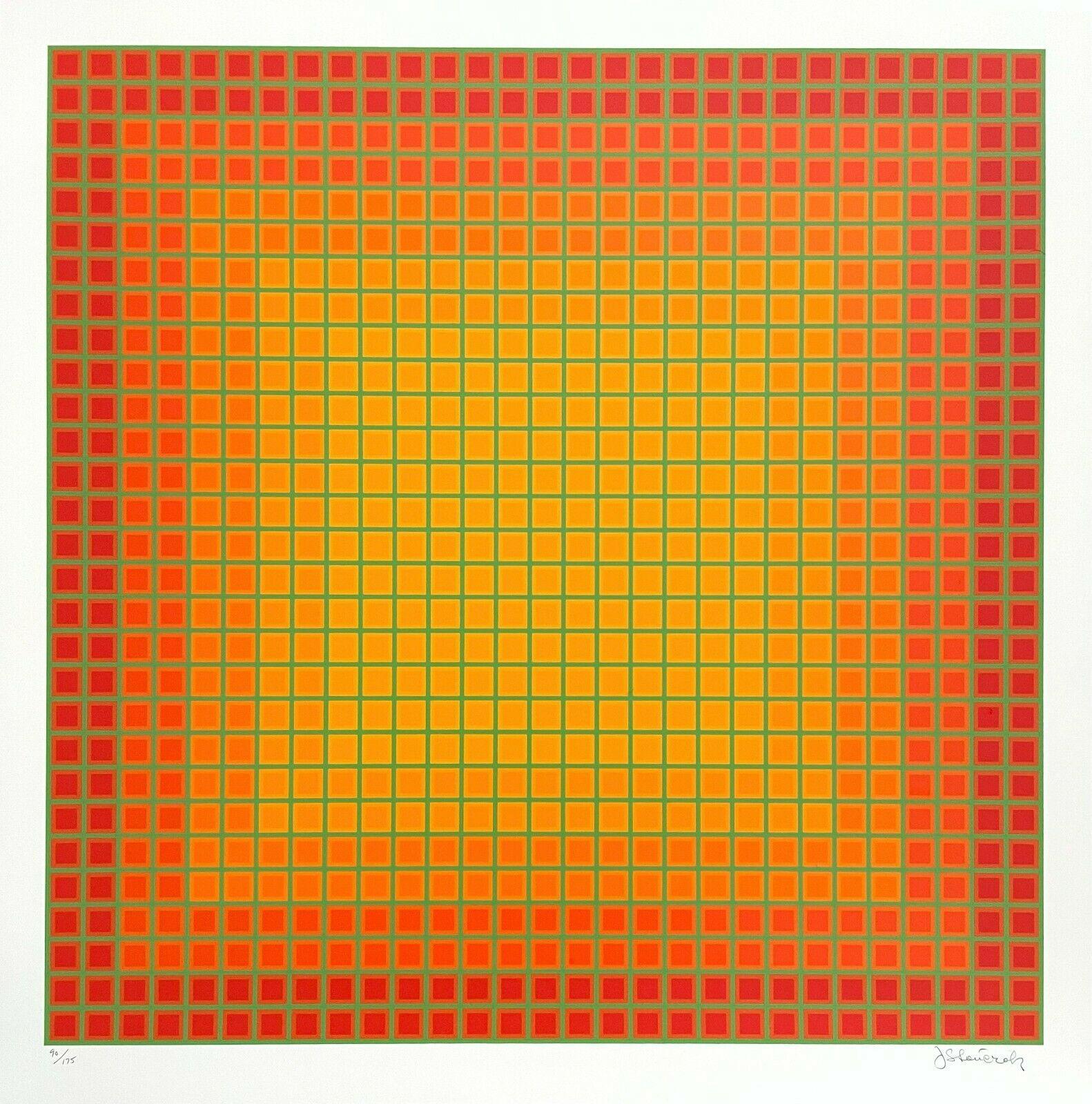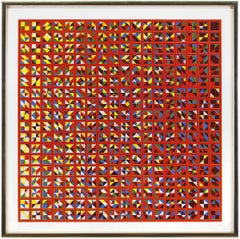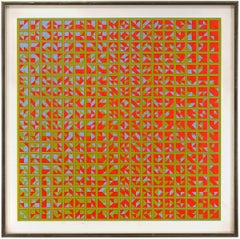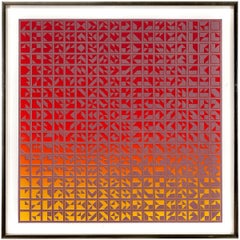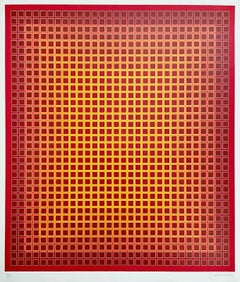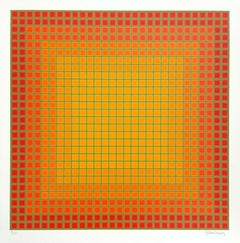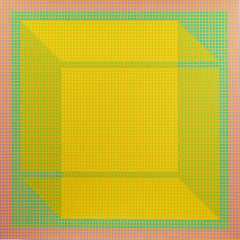Want more images or videos?
Request additional images or videos from the seller
1 of 5
Todd SmithSquare Variables VI1972
1972
$400
£310.89
€354.49
CA$573.90
A$624.70
CHF 330.25
MX$7,553.39
NOK 4,140.06
SEK 3,875.09
DKK 2,646.47
About the Item
Early graphic work by the photographer Todd Smith during his period at Pratt Institute in the early 1970s. Edition of 250, unsigned and unnumbered, as issued.
- Creator:Todd Smith (1947, American)
- Creation Year:1972
- Dimensions:Height: 16.25 in (41.28 cm)Width: 16.25 in (41.28 cm)
- Medium:
- Movement & Style:
- Period:
- Condition:
- Gallery Location:Surfside, FL
- Reference Number:1stDibs: LU38211327622
About the Seller
4.9
Platinum Seller
Premium sellers with a 4.7+ rating and 24-hour response times
Established in 1995
1stDibs seller since 2014
1,826 sales on 1stDibs
Typical response time: 1 hour
- ShippingRetrieving quote...Shipping from: Surfside, FL
- Return Policy
Authenticity Guarantee
In the unlikely event there’s an issue with an item’s authenticity, contact us within 1 year for a full refund. DetailsMoney-Back Guarantee
If your item is not as described, is damaged in transit, or does not arrive, contact us within 7 days for a full refund. Details24-Hour Cancellation
You have a 24-hour grace period in which to reconsider your purchase, with no questions asked.Vetted Professional Sellers
Our world-class sellers must adhere to strict standards for service and quality, maintaining the integrity of our listings.Price-Match Guarantee
If you find that a seller listed the same item for a lower price elsewhere, we’ll match it.Trusted Global Delivery
Our best-in-class carrier network provides specialized shipping options worldwide, including custom delivery.More From This Seller
View AllSquare Variables XI
By Todd Smith
Located in Surfside, FL
Early graphic work by the photographer Todd Smith during his period at Pratt Institute in the early 1970s. Edition of 250, unsigned and unnumbered, as issued.
Category
1970s Op Art Abstract Prints
Materials
Lithograph
Square Variables IX
By Todd Smith
Located in Surfside, FL
Early graphic work by the photographer Todd Smith during his period at Pratt Institute in the early 1970s. Edition of 250, unsigned and unnumbered, as issued.
Category
1970s Op Art Abstract Prints
Materials
Lithograph
Square Variables I
By Todd Smith
Located in Surfside, FL
Early graphic work by the photographer Todd Smith during his period at Pratt Institute in the early 1970s. Edition of 250, unsigned and unnumbered, as issued.
Category
20th Century Modern Abstract Prints
Materials
Lithograph
Square Variables XII
By Todd Smith
Located in Surfside, FL
Early graphic work by the photographer Todd Smith during his period at Pratt Institute in the early 1970s. Edition of 250, unsigned and unnumbered, as...
Category
1970s Modern Abstract Prints
Materials
Lithograph
Op Art 1971 Kinetic Oil Painting Pop Art Artist
By Josef Levi
Located in Surfside, FL
Josef Alan Levi (1938) is an American artist whose works range over a number of different styles, but which are unified by certain themes consistently present among them. Josef Levi began his artistic career in the 1960s and early '70s, producing highly abstract and very modernist pieces: these employing exotic materials such as light fixtures and metallic parts. By 1975, Levy had transitioned to painting and drawing still lifes. At first these were, traditionally, of mundane subjects. Later, he would depict images from art history, including figures originally created by the Old Masters. Around 1980, he made another important shift, this time toward creating highly precise, though subtly altered reproductions of pairs of female faces which were originally produced by other artists. It is perhaps this work for which he is most well known. Since around 2000, Josef Levi has changed the style of his work yet again: now he works entirely with computers, using digital techniques to abstract greatly from art history, and also from other sources.
Levi's works of art in the collections of the Museum of Modern Art, NYC, the National Gallery of Art, and the Albright-Knox Museum, among many others. Levi's art has been featured on the cover of Harper's Magazine twice, once in June 1987, and once in May 1997.
Josef Levi received a Bachelor of Arts degree in 1959 from the University of Connecticut, where he majored in fine arts and minored in literature. From 1959 to 1960, he served to a first lieutenant in the U.S. Army, and from 1960 through 1967 he was in the U.S. Army Reserves.
In 1966, he received the Purchase Award from the University of Illinois in 1966, and he was featured in New Talent U.S.A. by Art in America. He was an artist in residence at Appalachian State University in 1969, taught at Farleigh Dickenson University in 1971 and was a visiting professor of art at Pennsylvania State University in 1977. From 1975 to 2007, Levi resided in New York City. He now lives in an apartment in Rome, where he is able to paint with natural light as he was unable in New York.
From 1959 to 1960, Josef took some courses of Howard McParlin Davis and Meyer Schapiro at Columbia University which initiated him into the techniques of reproducing the works of the Old Masters. His first works, created in the 1960s, were wood and stone sculptures of women. His first mature works were abstract pieces, constructed of electric lights and steel.
In 1970, Levi's materials included fluorescent light bulbs, Rust-Oleum and perforated metal in addition to paint and canvas.
By 1980, Josef Levi's art had transformed into a very specific form: a combination of reproductions of female faces which were originally depicted by other artists. The faces which he reproduces may be derived from either portraits or from small portions of much larger works; they are taken from paintings of the Old Masters, Japanese ukiyo-e, and 20th-century art. Artists from whom he has borrowed include: Vermeer, Rembrandt, Piero della Francesca, Botero, Matisse, Utamaro, Correggio, Da Vinci, Picasso, Chuck Close, Max Beckmann, Pisanello, Lichtenstein. The creation of these works is informed by Levi's knowledge and study of art history.
Josef Levi's paintings from this period are drawn, then painted on fine linen canvas on wooden stretchers. The canvas is coated with twenty-five layers of gesso in order to produce a smooth surface on which to work. The drawing phase takes at least one month. Levi seals the drawing with acrylic varnish, and then he may apply layers of transparent acrylic in order to approximate the look of old paintings. After the last paint is applied, another layer of acrylic varnish is sprayed on to protect the work.
Most of the figures in his contemporary pieces are not paired with any others.
SELECTED COLLECTIONS
MUSEUM OF MODERN ART, NEW YORK, NY
ALBRIGHT- KNOX GALLERY, BUFFALO, NY
ALDRICH MUSEUM OF CONTEMPORARY ART, RIDGEFIELD, CT
NATIONAL GALLERY OF ART, WASHINGTON, DC
BROOKLYN MUSEUM OF ART, BROOKLYN, NY
SMITHSONIAN NATIONAL MUSEUM OF AMERICAN HISTORY, WASHINGTON, DC
CORCORAN GALLERY, WASHINGTON, DC
UNIVERSITY OF NOTRE DAME ART...
Category
1970s Op Art Abstract Paintings
Materials
Canvas, Oil
Op Art Hard Edged Abstract Geometric Mod Painting John Pearson
Located in Surfside, FL
John Pearson (American born 1940)
"Study for Circus"
1985
Acrylic on canvas painting
Hand signed verso, hangs from corner of canvas.
Provenance: The New Gallery of Contemporary Art, Cleveland, Ohio. Bearing label verso:
Dimensions: 19 x 19 in (it hangs in diamond shape which measures point to point 26.87 X 26.87 inches)
Red, White, Blue, and Yellow abstract geometric painting. Circle and ellipse.
John Pearson (British, 1940-was born in Yorkshire, England, and studied at the Harrogate School of Art, Yorkshire (National Diploma of Design, 1960), the Royal Academy Schools, London (Certificate, R.A.S 1963), the Akademie der Bildenden Kunst, Munich (1963–64, research fellow), and Northern Illinois University (M.F.A. 1966). He is known for hard edged, mod abstract oil painting on shaped canvas in geometric, curvilinear forms.
For many years, Pearson has made paintings and low-relief sculpture, predominantly wall pieces, which use color, form, and various degrees of abstraction to modify the space of entire rooms. With work exhibited nationally and internationally in both solo and group shows, Pearson has also been sought for many site-specific commissions, both public and private. These are typically highly abstract, simplified, and nuanced; they’re often witty, too.
Pearson early on became a devotee of the Dutch artist Piet Mondrian, a chief proponent of De Stijl (The Style), Pearson’s style has evolved from intense system-based abstract compositions to one more attuned to the spiritual influences of the natural environment. Pearson’s early style reflects the European reaction to expressionism and artistic emotionalism in the form of a rational, systematic approach to art (often called the “New Tendency”). An heir to the tenets of Constructivism, he investigated color within a predetermined linear or grid system that eliminated options after the artist’s initial choices. He was drawn to Cleveland in 1970 because of its reputation at the time for having a rich environment for abstract art, as two of the chief proponents of Kinetic art and op art, Julian Stanczak and Richard Anuszkeiwicz, worked there. Students of Josef Albers, the grand master of color theory who taught these two primary practitioners of the “Color Function” school of abstract art at Yale in the 1950s.
Pearson’s early style reflects a European reaction to abstract expressionism that manifested itself in a rational, systematic approach to art.Since his emergence in 1960s London, John Pearson has been using mathematical systems and computer programs to generate hard-edged geometric compositions. His work is of the same genre as the artists of the Denise Rene Gallery in Paris, similar to Vasarely, Agam, Cruz Diez and Soto. His most recent work, with its circles and ellipses superimposed on patterns of wavy lines, brings a more easygoing approach to his particular breed of rule-based art. Pearson has received grants from the National Endowment for the Arts and the Canada Council, and has had solo exhibitions at institutions including the Akron Art Museum, the Cleveland Center for Contemporary Art, and the Museum of Modern Art in Rijeka, Croatia. Pearson was born in Yorkshire (Britain) and studied art at the Royal Academy Schools in London, did advanced work in Munich (Germany), and earned the M.F.A. (Master of Fine Arts) degree from Northern Illinois University. Before arriving to teach at Oberlin College in 1972, he taught at the University of New Mexico, the Nova Scotia College of Art and Design, and the Cleveland Institute of Art. At Oberlin, he served as the Young-Hunter Professor of Art. John retired from teaching in 2014 but still occasionally works with students and lives in Oberlin where he educated several generations of appreciative liberal arts students. He also served as department chair and held the Young-Hunter endowed professorship from 1987 onward, until his retirement. Pearson travelled widely to paint, exhibit, and teach and received support from the Ohio Arts Council and the National Endowment for the Arts, among others. His career received recognition via the Cleveland Arts Prize in 1975, while most recently he was recognized as a Special Honoree by the same organization.
His paintings and sculptures are held in many public and private collections in the U.S., Canada, Europe, China, and Japan, as well as by museums, such as the Allen Art Museum (Oberlin), the Cleveland Museum of Art, the Museum of Modern Art (New York), and the Art Institute of Chicago. Hard-Edged
Select Group Exhibitions
Abstract, Constructive, Concrete Mondrian huis, Amersfoort, Holland
Chronologic Planet Art...
Category
1980s Abstract Geometric Abstract Paintings
Materials
Acrylic, Canvas
You May Also Like
Sequential Chroma, Julian Stanczak
By Julian Stanczak
Located in Fairfield, CT
Artist: Julian Stanczak (1928-2017)
Title: Sequential Chroma
Year: 1978
Edition: 2/175, plus proofs
Medium: Silkscreen on Somerset paper
Size: 30.25 x 25.75 inches
Condition: Good
In...
Category
1970s Op Art Landscape Prints
Materials
Screen
$2,800 Sale Price
20% Off
Continual, Julian Stanczak
By Julian Stanczak
Located in Fairfield, CT
Artist: Julian Stanczak (1928-2017)
Title: Continual
Year: 1979
Edition: 41/175, plus proofs
Medium: Silkscreen on Somerset paper
Size: 25 x 25 inches
Condition: Good
Inscription: Si...
Category
1970s Op Art Landscape Prints
Materials
Screen
$2,800 Sale Price
20% Off
Squares, Abstract Geometric Screenprint by Ludwig Wilding
By Ludwig Wilding
Located in Long Island City, NY
Artist: Ludwig Wilding, German (1927 - 2010)
Title: Squares
Year: 1967
Medium: Screenprint, signed and numbered in pencil
Edition: 38/100
Image Size: 15.5 x 15.5 inches
Size: 23.5 x ...
Category
1960s Op Art Abstract Prints
Materials
Screen
$680 Sale Price
20% Off
Boxed, from Twelve Progressions
By Julian Stanczak
Located in Miami, FL
Technical Information:
Julian Stanczak
Boxed, from Twelve Progressions
1971
Screenprint
26 1/2 x 26 1/2 in.
Edition of 90
Pencil signed and numbered
Accompanied with COA by Gregg S...
Category
1970s Op Art Abstract Prints
Materials
Screen
Untitled 23, Abstract Geometric Op Art Screenprint by David Roth
By David Roth
Located in Long Island City, NY
Luminous Op Art print by David Roth. Nicely matted and framed in black.
Untitled 23
David Roth, American (1942)
Date: 1979
Screenprint, signed and numbere...
Category
1970s Op Art Abstract Prints
Materials
Screen
Sequential Chroma, Op Art Screenprint by Julian Stanczak
By Julian Stanczak
Located in Long Island City, NY
A colorful OP Art silkscreen by Poland-born American OP Artist, Julian Stanczak.
Artist: Julian Stanczak, American (1928 - 2017)
Title: Sequential Chroma
Year: 1981
Medium: Screen...
Category
1980s Op Art Abstract Prints
Materials
Screen
More Ways To Browse
Jasper Johns Signed Prints
Kabbalah Painting
Life Size Vintage Dolls
Miro Book
Miro Numbered Lithograph
Morris Anderson
R Allen
Willem de Kooning On Sale
Winifred Nicholson
1940s Lithograph
Albers Variant
Art Blue Heron
Fine Art Miro
Georges Braque Oiseaux
Israeli Pop Art
Jasper Johns Poster
Joan Miro 1961
Luigi Palumbo
